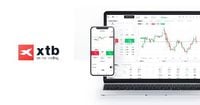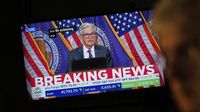The stock market faced a pullback on Thursday, March 20, 2025, as Wall Street relinquished some of its previous gains following the Federal Reserve's recent decision to maintain the nation's interest rates. Futures for the S&P 500 dropped by 0.4% before the market opened, while Dow Jones Industrial Average futures fell by 0.3% and Nasdaq futures decreased by 0.5%.
Despite the decline, there was a notable winner in the market: discount retailer Five Below. It saw a dramatic increase of over 11% in premarket trading after reporting fourth-quarter sales and profit that exceeded analyst expectations. The company, based in Philadelphia, also announced strong sales guidance, projecting the opening of 150 new stores throughout the year.
Investors are cautious after the Fed's recent announcement, which underscored the resilience of the U.S. economy amidst a backdrop of rising consumer pessimism. Fed Chair Jerome Powell acknowledged that while surveys show increasing concerns among U.S. consumers and companies, the economy is still fundamentally strong, supported by relatively low unemployment rates. The Fed has maintained steady interest rates thus far this year after significantly cutting them in late 2024. Moreover, officials are still considering two cuts to the federal funds rate by year's end.
In tandem with the Fed's updates, the broader market has been experiencing fluctuations, influenced by President Donald Trump's ongoing trade policy decisions. These changes have introduced uncertainty, leading some economists to predict a halt in spending by U.S. businesses and households.
In Europe, the mood was similarly dim, with major stock indexes retreating nearly 1% early in the session. Germany’s DAX index fell by 1.5%, while the CAC 40 in Paris dipped by 1%, and Britain's FTSE 100 edged down by 0.1%. Globally, fears around a potential trade war and actual conflict weighed heavily on markets.
Asian markets also struggled, particularly in China. The Hang Seng index in Hong Kong plummeted by 2.2%, with key tech companies like Baidu and Alibaba experiencing significant declines—5.4% and 4% drops, respectively. The Shanghai Composite dropped 0.5%, reflecting a broader trend of heavy selling in technology stocks.
Overall, the trading landscape revealed a complex interplay of optimistic reports, cautious Fed projections, and global economic uncertainties that kept traders on edge.
Gold prices surged to a record high, driven by safety-seeking behavior amidst economic instability. As of March 20, 2025, gold reached a staggering $3,057.21 per ounce, reflecting market sentiments regarding inflation and global uncertainties.
The Federal Reserve's latest meeting provided insights into the central bank's view on the economy. They projected an increase in inflation forecasts while downgrading expectations for economic growth, now estimated to be only 1.7% for 2025—down from an earlier 2.1% outlook. Additionally, the unemployment rate projection rose to 4.4%, demonstrating growing concerns over job stability in a shifting economic landscape.
With cautious optimism, the Fed maintained its expectations of two quarter-percentage-point rate cuts by year-end despite rising inflation expectations. Jerome Powell reiterated that inflation driven by tariff-related issues would likely be “transitory,” giving investors some hope amid mixed economic signals.
Similar dynamics played out in the bond markets as U.S. Treasury yields dipped to 4.22%. Following the Fed's meeting, the yields for German Bund eased to 2.77%, reflecting a global trend of falling bond yields.
Meanwhile, in currency markets, the U.S. dollar saw a slight improvement, trading at $1.0893 against the euro, $1.2971 against the pound, and standing firm at 148.40 yen. The British pound had previously surged to $1.3015, marking a four-month high before retracting slightly.
Market observers will likely continue to watch upcoming data releases, including layoffs-related information from the Labor Department and existing home sales figures, which may provide further clues to the health of the economy.
Overall, the interplay of domestic and international economic forces will keep investors on high alert as they navigate the uncertain landscape ahead.






